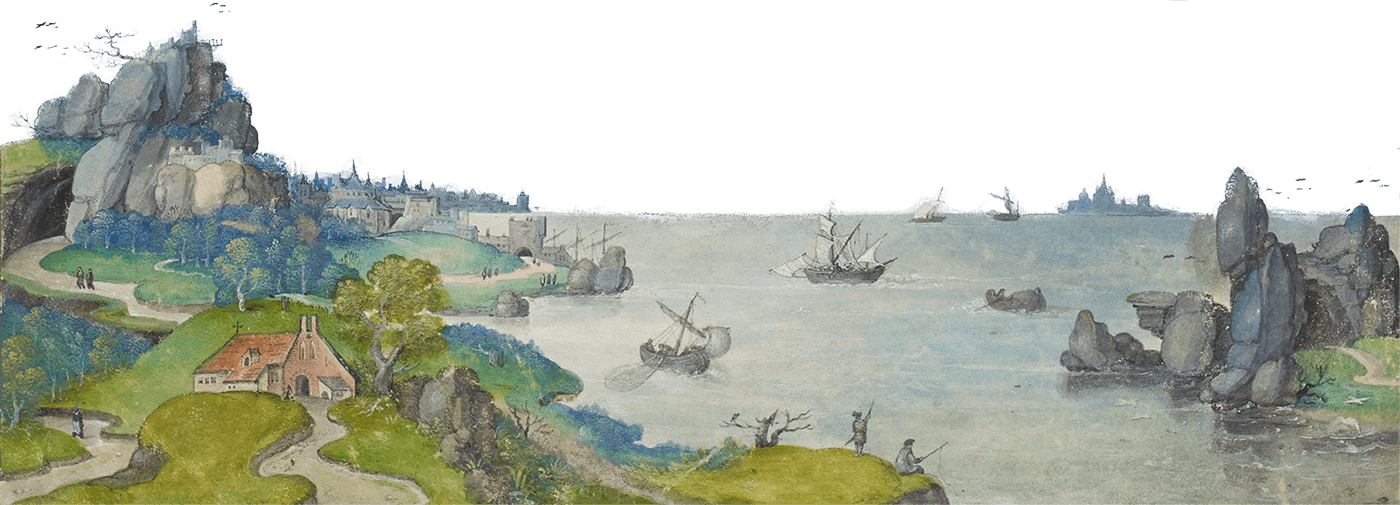About
New Research
The principal aim of this website is to enable and encourage academic study and research around the Wolsey Gospel and Epistle Lectionaries. We are expecting to add to the existing research featured on this website and we welcome submissions from students and scholars alike.
Any relevant research can be submitted for inclusion on the site. All submissions are subject to a process of review and will not be published until the reviewing body has completed its deliberations. The reviewing body will consist of members of Christ Church and Magdalen College and any external advisers the Wolsey Manuscripts project administrators choose to appoint. There is no guarantee that all submitted material will be included on this website, works may be refused without explanation. The reviewing body may on occasion ask the author to re-submit their research subject to specified alteration, addition or extension, the author is free to do so if they wish.
Material which is submitted must be done so under a Creative Commons license: Attribution-NonCommercial-NoDerivs CC BY-NC-ND. Works submitted by authors not wishing to do so under creative commons licensing will automatically be refused without review. Published material remains the intellectual property of the original author and they retain the right to use it or reproduce it elsewhere without restriction. By submitting work for consideration, the author grants permissions for the Wolsey Manuscripts project administrators to reproduce it in whole or in part on the website located at www.wolseymanuscripts.ac.uk for a period of time to be determined by the websites administrators.
For more information about how to submit your findings, or for any related questions, please email library@chch.ox.ac.uk or anne.chesher@magd.ox.ac.uk
How to use the Mirador viewer
The Mirador plugin is designed to enable multiple images to be viewed in adjacent windows, with controls to zoom and pan each image independently. In this instance Mirador will only allow you to compare mss101 and mss Lat. 223 as those are the focus of study on this site.
You can however choose which pages from which manuscript you load, you can determine which pane, left or right, each image appears in and you can zoom and pan each image independently of the other.
A basic introductory guide to using the controls on the Mirador viewer follows:
In the main Mirador border there is a Full Screen option with an icon of two arrows pointing apart (top right) for enlarging the viewer to full screen mode, if you use this, the icon changes to arrows pointing together, to indicate that you can exit full screen mode and return to the standard size view by clicking it again. Depending on the size and resolution of your screen, you may find working with the viewer full screen much easier.
Adjacent to the full screen option is an icon of four squares, labelled, Change Layout. If you click on this it enables you to increase the number of viewing panes available to you within Mirador, in any combination of rows or columns, up to a maximum of 5 x 5. You can use the control to change the layout at any point, or reset to 1 x 2.
There is also a full screen option within each of the viewing panes, (indicated this time only by the two arrows at the top right corner of each pane), indicating that you can also expand any pane to view full screen singly. Click the icon of the arrows pointing together to exit full screen mode and return to the original viewing size.
Each of the viewing panes also has an X icon (top left) allowing you to close that pane should you wish.
On the right, next to the arrow symbols, there is an 'i' contained in a circle, this is the information icon, if you click it a panel displaying metadata about each image will be revealed. Click the same icon a second time to hide the panel.
There is also another icon on the left top of each pane, but its appearance changes depending on the type of 'View' you are seeing in each pane. By default Mirador loads with the Image View (an icon representing hills and the sun in a tiny landscape picture). Next to the icon is a small downward pointing arrow, indicating that there are further choices.
If you click on this 'View' icon you will see the alternatives: Image View, Book View, Scroll View and Gallery View.
Each view changes the type of the display in the pane you select. The best way to understand them is to try each one in turn, you will see that some are more helpful for certain tasks. You can change the other pane to match, or use different views in each pane. You can change the view type as frequently as you wish.
The final controls, at the bottom right corner of each pane are plus '+' and minus '-' symbols. Use the + to Zoom In, and the - to Zoom Out. Adjacent to these are five controls for panning the image, arrows to move the image left, right, up or down, and a home (house icon) to re-centre the image. Note, the home icon also resets any zoom operation, so that the whole image fits within the pane at its optimum size.
Below the panes, in the default view, is a scroll bar showing other pages of the manuscripts as thumbnails. Click on any of these small images to load that page into the viewing pane above. Note, it is also possible to scroll this row of thumbnails, using controls beneath it, to reveal all of the pages and bindings of both manuscripts.
Privacy
The Wolsey Manuscripts website, www.wolseymanuscripts.ac.uk, is hosted by Christ Church, and offers the same commitment to privacy and protection of personal data, as that set out here on the main Christ Church website.
Accessibility Statement for the Wolsey Manuscripts Website

